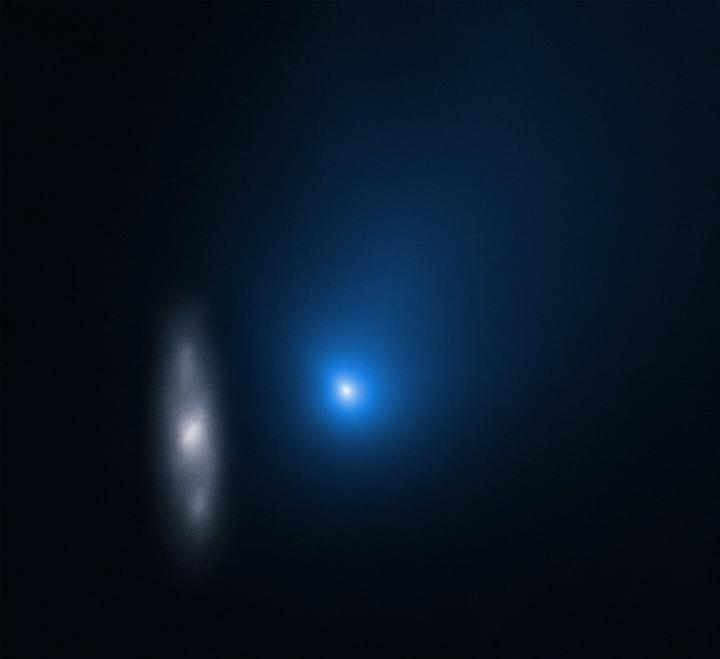The NASA's Hubble Space Telescope recently captured two new incredible images of the interstellar comet 2I/Borisov when it was streaking through our solar system on its way back into interstellar space. Borisov is one of the fastest comets that have been ever seen with a speed of over 175 000 kilometres per hour.
The interstellar comet was first observed by Hubble in October 2019 at a distance of approximately 420 million kilometres from Earth. However later later in November and December 2019, some new images of the comet were snapped at a closer distance that provided clearer insights into the details and dimensions of the interstellar visitor.

Striking facts about 2I/Borisov
Out of the two latest images, the first one shows Borisov in front of a distant background spiral galaxy known as 2MASX J10500165-0152029. The object's bright central core looks smeared as Hubble was tracking its movement. In this exposure, the comet was approximately at a distance of 326 million kilometres from Earth and the comet's tail of ejected dust can be seen streaking off to the upper right.
The second image Hubble snapped of the comet after it made its closest approach to the Sun. In this photo, the comet was at a distance of 185 million miles (298 million kilometers) from Earth with a speed of of 100,000 mph (160934 km/h). The reports stated that at this stage Borisov was subjected to a massive degree of heating than it had ever experienced in its life.
Experts claim that the comet's central portion is a coma made up of dust leaving the surface. Borisov is on its way to be closest to our planet at a distance of 290 million kilometres on December 28.
Size and dimensions of the comet
David Jewitt, a professor of planetary science and astronomy at the University of California Los Angeles, whose team captured the images, said: "Hubble gives us the best measure of the size of comet Borisov's nucleus, which is the really important part of the comet. Surprisingly, our Hubble images show that its nucleus is more than 15 times smaller than earlier investigations suggested it might be.
The radius is smaller than half a kilometre. This is important as knowing the size helps us to determine the total number and mass of such objects in the Solar System, and in the Milky Way... we would like to know how many others there are."
Named after discoverer
The comet, which is currently drawing nearer to Earth, was named after Gennadiy Borisov, who spotted the comet with a telescope he made himself. On August 30, 2019, soon after finding the comet on his new telescope, Borisov described his discovery as:
"I observed it on August 29, but it was August 30 GMT. I saw a moving object in the frame, it moved in a direction that was slightly different from that of main asteroids. I measured its coordinates and consulted the Minor Planet Center database. Turned out, it was a new object. Then I measured the near-Earth object rating, it is calculated from various parameters, and it turned out to be 100% – in other words, dangerous. In such cases I must immediately post the parameters to the world webpage for confirmation of dangerous asteroids. I posted it and wrote that the object was diffuse and that it was not an asteroid, but a comet."
According to the naming agency IAU, it's following the "tradition of naming cometary objects after their discoverers, so the object has been named 2I/Borisov." The 'I' stands for 'interstellar', and '2' for being the second interstellar object ever discovered, after 'Oumuamua' that was detected first in October 2017.








